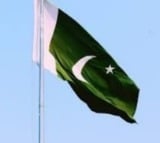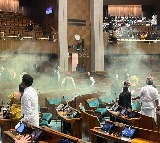North Korea fires Radong missile into Japan waters, rises tensions
North Korea fired a ballistic missile directly into the Japanese-controlled exclusive economic zone for the first time on Wednesday, drawing a severe warning from Tokyo and rising tensions with the United States and South Korea. The US military said North Korea had actually launched two Rodong intermediate-range missiles simultaneously, but one appeared to have exploded on take-off. The missile launches followed a North Korean threat of "physical action" over the planned deployment of a sophisticated US anti-missile system in South Korea, and came just weeks before the start of large-scale, joint South Korea-US military exercises. Japan said the one missile landed in the Sea of Japan, some 250 kilometres (155 miles) off its northern coast and within the country's Exclusive Economic Zone (EEZ). "It's a serious threat against our country's security," Prime Minister Shinzo Abe told reporters. "This is an outrageous act that cannot be tolerated." The United States condemned the clear violation of UN Security Council resolutions explicitly prohibiting North Korea's use of ballistic missile technology. "This provocation only serves to increase the international community's resolve to counter (North Korea's) prohibited activities," said Pentagon spokesman Gary Ross. US Strategic Command said the two missiles were launched from a site in western North Korea at around 7:50am Seoul time. It was the first time a North Korean missile has been fired direct into Japanese waters. The second stage of a medium-range missile fired over Japan had splashed down inside the EEZ off Japan's Pacific Ocean coast in 1998. Japan's top government spokesman Yoshihide Suga slammed Pyongyang for providing no advance warning of today's test. "From the perspective of the safety of aircraft and ships, it is an extremely problematic, dangerous act," Suga said. The Rodong is a scaled-up Scud variant with a maximum range of around 1,300 kilometres (800 miles).



















